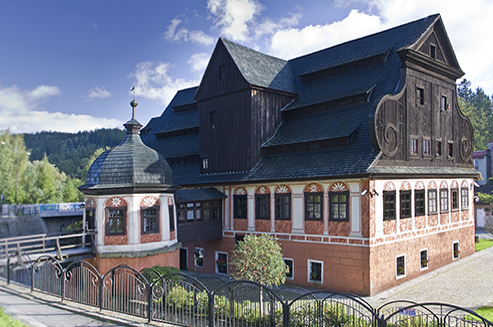The most renowned in Poland, the Museum of Papermaking in Duszniki Zdrój, is located in the 17th century paper mill, a unique industrial monument. It is seated on the Bystrzyca Dusznicka River, on the southern outskirts of the town by the international road leading to the Polish-Czech order.
The Museum of Papermaking in Duszniki Zdrój is the only one in Poland, professionally run museum dealing with the broadly conceived paper and papermaking subject. It collects, processes and makes available the collections on the history of papermaking, painting and the history of the town Duszniki Zdrój. It also actively takes its interest in paper art which is reflected in the cooperation with paper artists. Moreover, more and more popularity is gained by the educational offer and scientific and research activities of the Museum.
The first records on the Duszniki paper mill and its paper maker called Ambrosius Tepper date back to the second half of the 16th century. The buildings of the preserved paper mill make a group of adjoining constructions erected step by step, at different time intervals. The most significant, main building of the paper mill, once serving as living and production quarters, was built in 1605.
The history of the Duszniki paper mill in the years 1562 – 1939 was made by three families of papermakers: the Kretschmers, the Hellers and the Wiehrs. In the 17th century the paper mill was considered as one of the most renowned in Silesia. It also had exclusive rights to supply Wrocław (Breslau) offices with paper. In the 18th century the paper mill was substantially extended and modernised with modern paper making machines. The production of paper in Duszniki was brought to a stop in 1937. Two years later Karl Wiehr, the last of the owners of the paper mill, presented the mill to the town with the intention to have a regional museum of technology started in the historic building.
More information on: The Museum of Papermaking
Photos © The Museum of Papermaking


